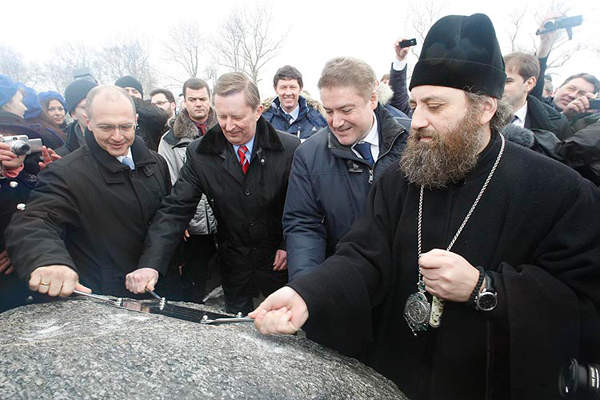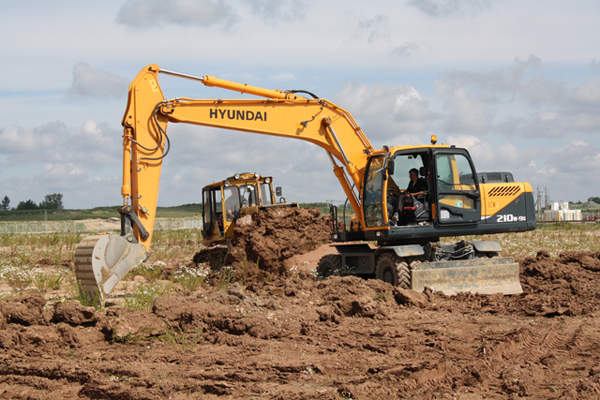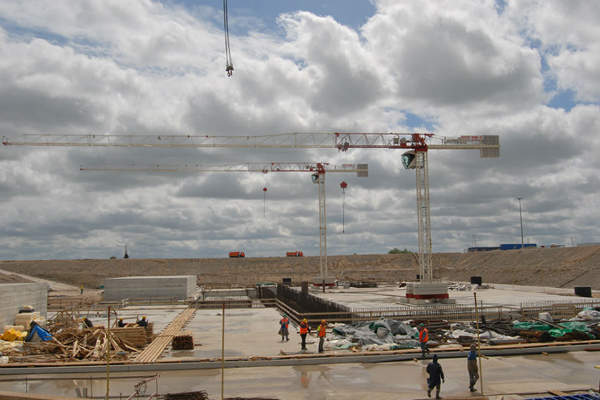The 2,400MW Baltic nuclear power plant (NPP), comprising two units of 1,200MW each, is being constructed in the north-east of the Kaliningrad Region, within the Neman municipal area of Russia. State-owned utility RosEnergoAtom will operate the plant.
The ground breaking ceremony for the project was conducted on 25 February 2010. The construction licence for the first unit was issued by Rostechnadzor in November 2011 and the first concrete for the foundation plate was poured in February 2012.
Construction of the Baltic NPP Unit 2 started with the excavation of the foundation pit for the main buildings and structures on 21 June 2012. The first unit is planned to be put into operation in 2016, while the second unit is expected to be completed in 2018.
Baltic is the first Russian project that proposed the participation of foreign investors (with a maximum stake of 49%). It will also be the first plant to use equipment manufactured by western companies, such as the Alstom-Atomenergomash steam turbine, and to export most of its output.
Baltic nuclear power plant location, background and design details
The NPP will be located in Kaliningrad Region, bordering Lithuania and Poland. The location is in close proximity to Estonia, Latvia and Germany, one of Russia’s crucial trade partners.
On 25 September 2009, Russian President Vladimir Putin signed the decree for the construction of the Baltic NPP. The project is the outcome of a cooperation agreement between the State Atomic Energy Corporation Rosatom and the government of the Kaliningrad region. It is also incorporated into the declaration of intent on the Baltic NPP investment project authorised by Rosatom and approved by the Duma of the Kaliningrad Oblast.
The plant is designed to be an AES-2006 model and will comprise two water-moderated, water-cooled power reactor units (VVER-1200) of 1,200MW each.
Each VVER reactor is estimated to have a heat output of 250Gcal/h and an annual power generation capacity of 17.4bn kilowatt-hours.
Turbine technology
The turbine island, to be supplied by the joint venture of AAEM, will consist of Alstom ARABELLE steam turbines, which are known to be the best half-speed turbines in the market. The turbines will operate at a speed of 1,500rpm and have a steam inlet pressure 68 bar.
The application of half-speed technology enables the turbines to handle large quantities of relatively cold, wet and low-pressure steam produced by large nuclear reactors.
The ARABELLE technology will optimise the use of high-efficiency, single-flow steam expansion and enable the production of approximately 300MW to feed to the district heating system of Kaliningrad.
Welded-rotor technology is applied in the manufacturing of the turbine, as steel with lower yield strength provides better resistance to stress corrosion cracking in addition to providing a longer service life.
Export of electricity from the Baltic NPP
Rosenergoatom entered a 20-year agent agreement with INTER RAO UES for arranging the export of electricity generated by the Baltic NPP. From 2017, it is anticipated to export up to 1,000MW of electricity from Kaliningrad Oblast.
Key players involved with the Baltic NPP development
Nizhny Novgorod Engineering Company (Atomenergoproekt), an enterprise of Rosatom, is the general designer of the Baltic NPP and was awarded the turnkey engineering, procurement and construction (EPC) contract. Atomenergoproekt engaged Northern Construction Management as the subcontractor for the project.
The 5,600MW Barakah nuclear power plant (NPP) is the first NPP being developed in the United Arab Emirates (UAE).
The joint venture of Alstom and Atomenergomash (AAEM) was contracted to supply turbine island equipment for the plant. The contractual scope includes the supply and installation of equipment, including ARABELLE steam turbines, generators, condensers, moisture separator reheaters, low-pressure and high-pressure feed water heaters, feed water tanks and other auxiliary equipment.
In July 2010, Rosenergoatom signed an agency agreement with INTER RAO UES for conducting a bankable feasibility study in order to attract investors for the Baltic project. INTER RAO UES engaged Societe Generale (SG CFA) as its investment consultant, which is responsible for the feasibility study and securing investments.
Worley Parsons is the technical consultant for the project, while Norton Rose was engaged by INTER RAO UES as the legal consultant.
United Energy-construction Corporation conducted concrete casting works for the Unit 1 foundation plate, while Mostovik constructed the floors of the nuclear service building of the unit.
Energomash (Volgodonsk)-Atommash manufactured the corium trap, which was installed by Energospecmontazh in December 2012.
Yantarenergo was awarded the contract for the development of the engineering infrastructure such as power supply systems and to prepare the conditions for attracting investors.
TITAN-2 Holding acts as the main subcontractor for the construction of the nuclear power plant.




